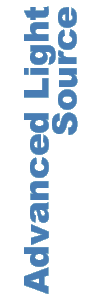
 |
 |
Genesis of a Beamline
Berrah, a native of Algeria who joined the Western Michigan faculty in 1991 after earning her Ph.D. in physics from the University of Virginia, is primarily interested in learning more about how electron-electron interactions affect atomic and molecular systems. Although the physical and chemical properties of any material are largely dependent upon such interactions, much about them remains a mystery. Third generation synchrotron radiation sources such as the ALS could shed some much needed light on the mystery by providing an entire new level of refinement for AMO physics experiments. This was the contention of Berrah's team three years ago when they submitted a pre-proposal in response to the U.S. Department of Energy's call for new facility initiatives. Given a 3-page application with which to make your case and going up against hundreds of other pre-proposals from across the nation, the odds are against being invited to submit a full-proposal. Berrah's team, however, was among the chosen. The next step was to organize the full-proposal. "Participating scientists must have a shared recognition that a joint endeavor is essential to rapid and efficient progress in their field of research," says Berrah. "The strengths of our team rest on the homogeneity of our research objectives and the diversity of our research groups." Contributors to the full-proposal that Berrah submitted, one of only a handful that ultimately received funding, included Joseph Berkowitz, Argonne National Lab; John Bozek and Fred Schlachter, Berkeley Lab; Carmen Cisneros, Universidad Nacional Autonoma de Mexico; Lewis Cocke, Kansas State University; Chris Greene, University of Colorado; Tom Gorczyca, Western Michigan University; Duane Jaecks, James Samson, and Anthony Starace, the University of Nebraska at Lincoln; Michael Lubell, City University of New York; Joseph Macek, University of Tennessee; Thomas Morgan, Wesleyan University; Ron Phaneuf, University of Nevada at Reno; and Robert Wu, the University of Southern California. Construction began in 1997 on beamline 10.0.1, a premier source of undulator light for AMO physics. It was commissioned in the summer of 1998. Berrah, who oversaw the project, praises Bozek, a staff scientist with the ALS, and the ALS technical staff for assembling the beamline, and for their role in the project's immediate success. "We are indebted to the ALS staff who put this beamline together in record time and did such a beautiful job," she says. Ultimately, the AMO branches of the beamline will feature five endstations, but even now, with less than three in place, scientific contributions to the field have already been made. Berrah is now on sabbatical at the ALS for a year to complete construction on the AMO endstations. Her biggest challenge? "I am constantly thinking about the science I would like to do, but I also have to manage our funds to make the best possible use of them," she answers. "Money is so much easier to spend than to raise," she says with a smile. |
||
|
|||